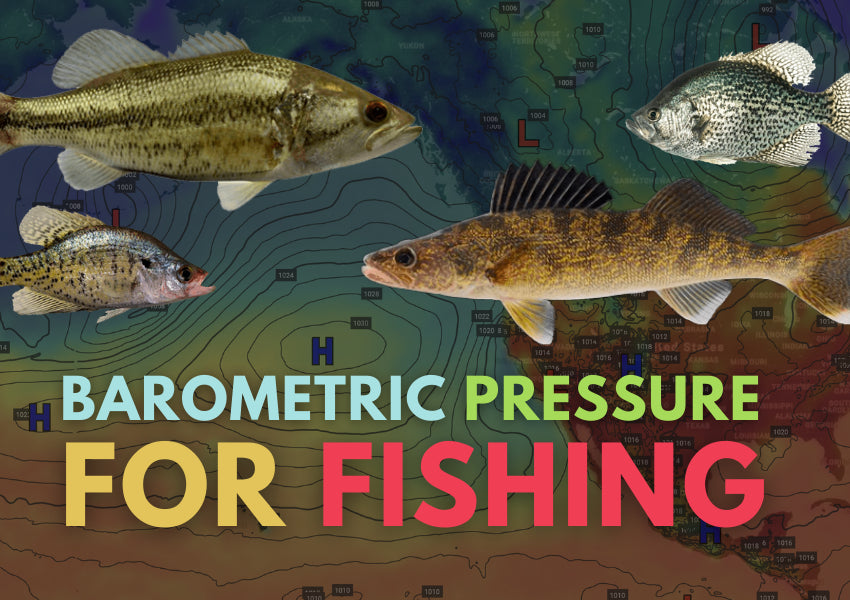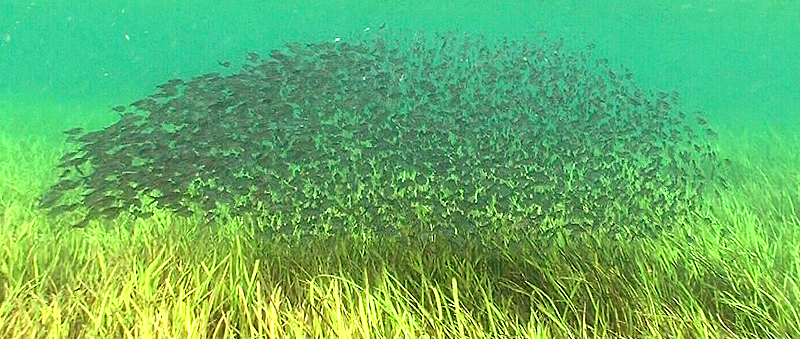Importance of Barometric Pressure in the Bay

Barometric pressure is one of those hidden factors that can have a big impact on your success when inshore fishing, especially when targeting redfish and speckled trout in the bay. Many anglers overlook it, but understanding how pressure changes affect fish behavior can give you a serious edge on the water. Here’s a breakdown of why barometric pressure matters and how you can use it to catch more fish.
Barometric pressure, also known as atmospheric pressure, is the weight of the air pressing down on the earth. It fluctuates due to weather patterns and can be influenced by fronts moving in or out. Low-pressure systems are usually associated with stormy weather, while high-pressure systems bring clearer skies. These changes in air pressure directly affect the water and, more importantly, how fish behave.
Fish have swim bladders, which they use to regulate buoyancy. When barometric pressure changes, it affects the swim bladder, making fish feel uncomfortable. A falling barometer (low pressure) can make the swim bladder expand, while rising pressure (high pressure) can cause it to compress. This affects how fish feed, where they hang out, and how active they are.
When a low-pressure front is coming through, redfish and speckled trout often become more active. This is because the pressure drop makes them feel lighter, and they become more aggressive in feeding before the storm or weather front hits. A dropping barometer can trigger a feeding frenzy as the fish sense that bad weather is coming, and they need to stock up on food. It’s a great time to be out on the water if you can manage it.
After a front passes and the barometer starts rising, fish tend to slow down and move deeper. The rising pressure makes their swim bladders compress, and this can make them uncomfortable. During these high-pressure periods, redfish and trout are less likely to be in shallow areas and more likely to be hanging out in deeper water, conserving energy. While they may still bite, the action will be slower, and you’ll need to fish deeper to find them.
The best barometric conditions for inshore fishing are when the pressure is either steady or falling. A steady barometer means that fish have adjusted to the current conditions and are more likely to feed normally. A falling barometer, on the other hand, can trigger an increase in activity as fish prepare for a change in weather. Many anglers have noticed that the bite can really turn on right before a storm hits.
Conversely, fishing can be tougher when the barometer is rising sharply. During these times, fish may become lethargic and less interested in feeding, making it harder to get bites. In these conditions, slowing down your presentation and targeting deeper spots may help you get more action.
Watch for approaching low-pressure systems or cold fronts. These are prime times to hit the water, as fish will often feed aggressively before the front comes through. If you’re fishing after a high-pressure front has moved in, don’t be afraid to fish deeper. The fish may not be as active in shallow water, but they’ll still be around. Slow down your presentation, and focus on deeper areas where the fish might be holding. If you have the flexibility to plan your fishing trips, try to time them for when the pressure is either steady or falling. This is when fish are likely to be more active and feeding.
There are plenty of tools available today to help you track barometric pressure. Many weather apps include pressure readings, and there are even fishing-specific apps that will show you pressure trends. Paying attention to these trends can help you anticipate when the fish are going to be biting and when it might be worth waiting for better conditions.
Barometric pressure might not be something you can see, but it’s definitely something you can feel in the way the fish behave. By understanding how pressure changes affect fish like redfish and speckled trout, you can adjust your tactics and timing to increase your chances of success. Keep an eye on the barometer, plan your trips around falling or steady pressure, and be prepared to fish deeper and slower when the pressure is rising. Mastering this hidden factor will put more fish in the boat and make you a more effective inshore angler.




